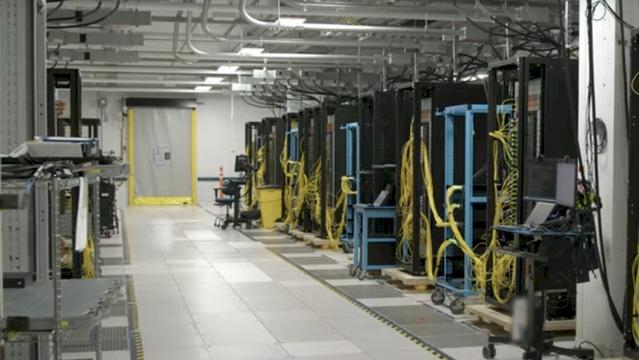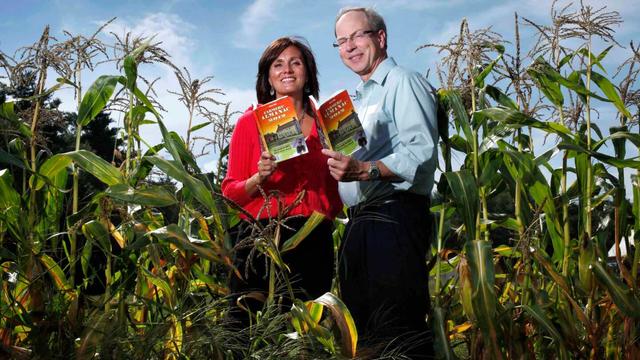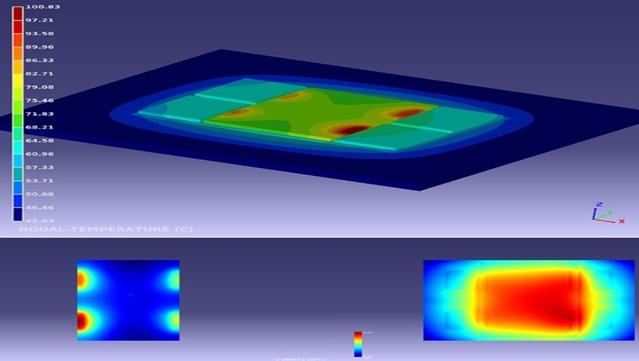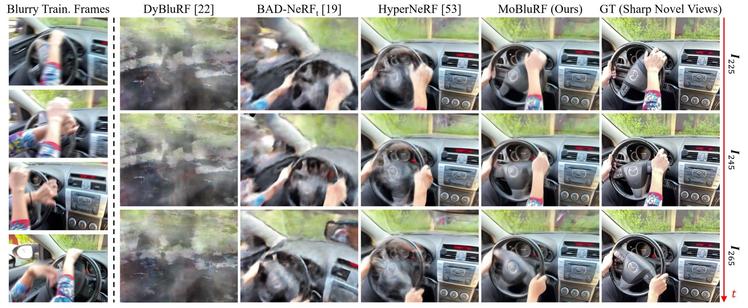Researchers detail popEVE, an AI model to predict the disease-causing potential of unknown human genetic mutations, and says it beats Google's AlphaMissense (Michael Peel/Financial Times)
https://www.ft.com/content/bc49e334-776b-41d0-a9be-fb0c29c54853
Here’s a good analysis by Gartner and The Next Platform that tries to make sense of spending on AI predictions over the next few years. “if you add devices to datacenter stuff, then AI drove 19.6 percent of IT revenues in 2024 and will drive 27.2 percent of IT revenues in 2025 and 34.1 percent in 2026.” h…
A couple of months ago Bali experienced its worst floods in more than a decade.
-- They came at the peak of the dry season.
Instead of the empty wells farmers faced last year,
this time their crops were washed away;
roads turned into brown, swirling rivers;
houses collapsed in the torrents;
and 17 people were killed.
⭐️Indonesia, the world’s fourth-most populous country, faces a paradox.
Sometimes described as a sleeping giant, it is one of the …
The design and reconstructible history of the Mayan eclipse table of the Dresden Codex: #Maya eclipse tables: #eclipse tables in the #DresdenCodex were based on lunar tables and adjusted for slippage over time.
A future 'Hari Seldon' takes notes:
Mathematicians Unveil a Smarter Way to Predict the Future
https://scitechdaily.com/mathematicians-unveil-a-smarter-way-to-predict-the-future/
Sonnet 014 - XIV
Not from the stars do I my judgement pluck;
And yet methinks I have Astronomy,
But not to tell of good or evil luck,
Of plagues, of dearths, or seasons' quality;
Nor can I fortune to brief minutes tell,
Pointing to each his thunder, rain and wind,
Or say with princes if it shall go well
By oft predict that I in heaven find:
But from thine eyes my knowledge I derive,
And, constant stars, in them I read such art <…
Former Cowboys Predict Eagles vs Cowboys | Players Lounge https://www.youtube.com/watch?v=RiQ2VoGdruo
Series A, Episode 13 - Orac
ORAC: The words future, present, past are meaningless.
AVON: Define 'meaningless'.
ORAC: I have the capacity to predict events that have not yet taken place.
AVON: That is not what I asked.
https://blake.torpidity.net/m/113/456 B7B3
Crosslisted article(s) found for cs.LG. https://arxiv.org/list/cs.LG/new
[1/3]:
- Optimizing Text Search: A Novel Pattern Matching Algorithm Based on Ukkonen's Approach
Xinyu Guan, Shaohua Zhang
https://arxiv.org/abs/2512.16927 https://mastoxiv.page/@arXiv_csDS_bot/115762062326187898
- SpIDER: Spatially Informed Dense Embedding Retrieval for Software Issue Localization
Shravan Chaudhari, Rahul Thomas Jacob, Mononito Goswami, Jiajun Cao, Shihab Rashid, Christian Bock
https://arxiv.org/abs/2512.16956 https://mastoxiv.page/@arXiv_csSE_bot/115762248476963893
- MemoryGraft: Persistent Compromise of LLM Agents via Poisoned Experience Retrieval
Saksham Sahai Srivastava, Haoyu He
https://arxiv.org/abs/2512.16962 https://mastoxiv.page/@arXiv_csCR_bot/115762140339109012
- Colormap-Enhanced Vision Transformers for MRI-Based Multiclass (4-Class) Alzheimer's Disease Clas...
Faisal Ahmed
https://arxiv.org/abs/2512.16964 https://mastoxiv.page/@arXiv_eessIV_bot/115762196702065869
- Probing Scientific General Intelligence of LLMs with Scientist-Aligned Workflows
Wanghan Xu, et al.
https://arxiv.org/abs/2512.16969 https://mastoxiv.page/@arXiv_csAI_bot/115762050529328276
- PAACE: A Plan-Aware Automated Agent Context Engineering Framework
Kamer Ali Yuksel
https://arxiv.org/abs/2512.16970 https://mastoxiv.page/@arXiv_csAI_bot/115762054461584205
- A Women's Health Benchmark for Large Language Models
Elisabeth Gruber, et al.
https://arxiv.org/abs/2512.17028 https://mastoxiv.page/@arXiv_csCL_bot/115762049873946945
- Perturb Your Data: Paraphrase-Guided Training Data Watermarking
Pranav Shetty, Mirazul Haque, Petr Babkin, Zhiqiang Ma, Xiaomo Liu, Manuela Veloso
https://arxiv.org/abs/2512.17075 https://mastoxiv.page/@arXiv_csCL_bot/115762077400293945
- Disentangled representations via score-based variational autoencoders
Benjamin S. H. Lyo, Eero P. Simoncelli, Cristina Savin
https://arxiv.org/abs/2512.17127 https://mastoxiv.page/@arXiv_statML_bot/115762251753966702
- Biosecurity-Aware AI: Agentic Risk Auditing of Soft Prompt Attacks on ESM-Based Variant Predictors
Huixin Zhan
https://arxiv.org/abs/2512.17146 https://mastoxiv.page/@arXiv_csCR_bot/115762318582013305
- Application of machine learning to predict food processing level using Open Food Facts
Arora, Chauhan, Rana, Aditya, Bhagat, Kumar, Kumar, Semar, Singh, Bagler
https://arxiv.org/abs/2512.17169 https://mastoxiv.page/@arXiv_qbioBM_bot/115762302873829397
- Systemic Risk Radar: A Multi-Layer Graph Framework for Early Market Crash Warning
Sandeep Neela
https://arxiv.org/abs/2512.17185 https://mastoxiv.page/@arXiv_qfinRM_bot/115762275982224870
- Do Foundational Audio Encoders Understand Music Structure?
Keisuke Toyama, Zhi Zhong, Akira Takahashi, Shusuke Takahashi, Yuki Mitsufuji
https://arxiv.org/abs/2512.17209 https://mastoxiv.page/@arXiv_csSD_bot/115762341541572505
- CheXPO-v2: Preference Optimization for Chest X-ray VLMs with Knowledge Graph Consistency
Xiao Liang, Yuxuan An, Di Wang, Jiawei Hu, Zhicheng Jiao, Bin Jing, Quan Wang
https://arxiv.org/abs/2512.17213 https://mastoxiv.page/@arXiv_csCV_bot/115762574180736975
- Machine Learning Assisted Parameter Tuning on Wavelet Transform Amorphous Radial Distribution Fun...
Deriyan Senjaya, Stephen Ekaputra Limantoro
https://arxiv.org/abs/2512.17245 https://mastoxiv.page/@arXiv_condmatmtrlsci_bot/115762447037143855
- AlignDP: Hybrid Differential Privacy with Rarity-Aware Protection for LLMs
Madhava Gaikwad
https://arxiv.org/abs/2512.17251 https://mastoxiv.page/@arXiv_csCR_bot/115762396593872943
- Practical Framework for Privacy-Preserving and Byzantine-robust Federated Learning
Baolei Zhang, Minghong Fang, Zhuqing Liu, Biao Yi, Peizhao Zhou, Yuan Wang, Tong Li, Zheli Liu
https://arxiv.org/abs/2512.17254 https://mastoxiv.page/@arXiv_csCR_bot/115762402470985707
- Verifiability-First Agents: Provable Observability and Lightweight Audit Agents for Controlling A...
Abhivansh Gupta
https://arxiv.org/abs/2512.17259 https://mastoxiv.page/@arXiv_csMA_bot/115762225538364939
- Warmer for Less: A Cost-Efficient Strategy for Cold-Start Recommendations at Pinterest
Saeed Ebrahimi, Weijie Jiang, Jaewon Yang, Olafur Gudmundsson, Yucheng Tu, Huizhong Duan
https://arxiv.org/abs/2512.17277 https://mastoxiv.page/@arXiv_csIR_bot/115762214396869930
- LibriVAD: A Scalable Open Dataset with Deep Learning Benchmarks for Voice Activity Detection
Ioannis Stylianou, Achintya kr. Sarkar, Nauman Dawalatabad, James Glass, Zheng-Hua Tan
https://arxiv.org/abs/2512.17281 https://mastoxiv.page/@arXiv_csSD_bot/115762361858560703
- Penalized Fair Regression for Multiple Groups in Chronic Kidney Disease
Carter H. Nakamoto, Lucia Lushi Chen, Agata Foryciarz, Sherri Rose
https://arxiv.org/abs/2512.17340 https://mastoxiv.page/@arXiv_statME_bot/115762446402738033
toXiv_bot_toot
AI can be considered successful once it can accurately predict the revolution that ends the hegemony of billionairedom.
🇦🇹 Austria: In Vienna, the police is trialing an automated software to predict crime. Every day, the system outputs hotspots to patrol [Kurier, 3 Dec 🔒, in German]. via Algorithm Watch
#ai #privacy
"Specialist" and "generalist" are surprisingly slippery categories— biology abhors a binary— but quantifying the shared evolutionary history of plants eaten by insects introduced to North America let these authors predict their plant-damaging impacts https://doi.org/10.1111/ele.70083
<…
DriveVLA-W0: World Models Amplify Data Scaling Law in Autonomous Driving
Yingyan Li, Shuyao Shang, Weisong Liu, Bing Zhan, Haochen Wang, Yuqi Wang, Yuntao Chen, Xiaoman Wang, Yasong An, Chufeng Tang, Lu Hou, Lue Fan, Zhaoxiang Zhang
https://arxiv.org/abs/2510.12796
We found that ChatGPT made executives significantly more optimistic in their forecasts while peer discussions tended to encourage caution. Additionally, we found that the executives armed with ChatGPT made worse predictions, based on actual stock figures, than they had before they consulted the tool.”
But they'll still keep pushing it down our throats, because nobody wants to be first to get out of the bubble.
Not in Sync: Unveiling Temporal Bias in Audio Chat Models
Jiayu Yao, Shenghua Liu, Yiwei Wang, Rundong Cheng, Lingrui Mei, Baolong Bi, Zhen Xiong, Xueqi Cheng
https://arxiv.org/abs/2510.12185
Riccati-ZORO: An efficient algorithm for heuristic online optimization of internal feedback laws in robust and stochastic model predictive control
Florian Messerer, Yunfan Gao, Jonathan Frey, Moritz Diehl
https://arxiv.org/abs/2511.10473 https://arxiv.org/pdf/2511.10473 https://arxiv.org/html/2511.10473
arXiv:2511.10473v1 Announce Type: new
Abstract: We present Riccati-ZORO, an algorithm for tube-based optimal control problems (OCP). Tube OCPs predict a tube of trajectories in order to capture predictive uncertainty. The tube induces a constraint tightening via additional backoff terms. This backoff can significantly affect the performance, and thus implicitly defines a cost of uncertainty. Optimizing the feedback law used to predict the tube can significantly reduce the backoffs, but its online computation is challenging.
Riccati-ZORO jointly optimizes the nominal trajectory and uncertainty tube based on a heuristic uncertainty cost design. The algorithm alternates between two subproblems: (i) a nominal OCP with fixed backoffs, (ii) an unconstrained tube OCP, which optimizes the feedback gains for a fixed nominal trajectory. For the tube optimization, we propose a cost function informed by the proximity of the nominal trajectory to constraints, prioritizing reduction of the corresponding backoffs. These ideas are developed in detail for ellipsoidal tubes under linear state feedback. In this case, the decomposition into the two subproblems yields a substantial reduction of the computational complexity with respect to the state dimension from $\mathcal{O}(n_x^6)$ to $\mathcal{O}(n_x^3)$, i.e., the complexity of a nominal OCP.
We investigate the algorithm in numerical experiments, and provide two open-source implementations: a prototyping version in CasADi and a high-performance implementation integrated into the acados OCP solver.
toXiv_bot_toot
Imagine ChatGPT but instead of predicting text it just linked you to the to 3 documents most-influential on the probabilities that would have been used to predict that text.
Could even generate some info about which parts of each would have been combined how.
There would still be issues with how training data is sourced and filtered, but these could be solved by crawling normally respecting robots.txt and by paying filterers a fair wage with a more relaxed work schedule and mental health support.
The energy issues are mainly about wild future investment and wasteful query spam, not optimized present-day per-query usage.
Is this "just search?"
Yes, but it would have some advantages for a lot of use cases, mainly in synthesizing results across multiple documents and in leveraging a language model more fully to find relevant stuff.
When we talk about the harms of current corporate LLMs, the opportunity cost of NOT building things like this is part of that.
The equivalent for art would have been so amazing too! "Here are some artists that can do what you want, with examples pulled from their portfolios."
It would be a really cool coding assistant that I'd actually encourage my students to use (with some guidelines).
#AI #GenAI #LLMs
After today's capitulation by the D-party Fox News is forecasting a total sweep by the R-party in November 2026.
Given that the D-party can't organize themselves out of a wet paper bag, and then sinks their own boat by elevating identity politics over pretty much everything else, I can see the logic in such a move by Fox News.
(And, no, Fox News did not really predict that total sweep.)
After tonight's election results, I predict a lot of GOP retirement announcements as the mid-terms approach.
RELATE-Sim: Leveraging Turning Point Theory and LLM Agents to Predict and Understand Long-Term Relationship Dynamics through Interactive Narrative Simulations
Matthew Yue, Zhikun Xu, Vivek Gupta, Thao Ha, Liesal Sharabi, Ben Zhou
https://arxiv.org/abs/2510.00414
Interpretable Spectral Features Predict Conductivity in Self-Driving Doped Conjugated Polymer Labs
Ankush Kumar Mishra, Jacob P. Mauthe, Nicholas Luke, Aram Amassian, Baskar Ganapathysubramanian
https://arxiv.org/abs/2509.21330
@… two precautions that may help, in lossy situations:
pkg prime-origins | sort -u > /var/tmp/pkg-prime-origins.txt
/usr/local/etc/periodic/daily/411.pkg-backup
If – following an issue – you predict the need to revert to the backup, you can:
service cron stop
Comparative Evaluation of Neural Network Architectures for Generalizable Human Spatial Preference Prediction in Unseen Built Environments
Maral Doctorarastoo, Katherine A. Flanigan, Mario Berg\'es, Christopher McComb
https://arxiv.org/abs/2510.10954
The Safety Challenge of World Models for Embodied AI Agents: A Review
Lorenzo Baraldi, Zifan Zeng, Chongzhe Zhang, Aradhana Nayak, Hongbo Zhu, Feng Liu, Qunli Zhang, Peng Wang, Shiming Liu, Zheng Hu, Angelo Cangelosi, Lorenzo Baraldi
https://arxiv.org/abs/2510.05865
A Design-based Solution for Causal Inference with Text: Can a Language Model Be Too Large?
Graham Tierney, Srikar Katta, Christopher Bail, Sunshine Hillygus, Alexander Volfovsky
https://arxiv.org/abs/2510.08758
What are you going to do when the regime falls? After calling all your friends, after the great memes, after the parties, what are you going to do to make sure it never happens again? What world should we create?
Taxing billionaires is great and all, but we could build systems where billionaires are impossible. Is hoarding wealth and using it to control people even something we should consider part of a functional and humane system? Any system where one group of people doesn't have rights means that anyone can be stripped of their rights, like has happened with all the US citizens who've been illegally detained and deported by ICE. Does the concept of "rights" that must be defended with violence, that can be stripped away by people who can exercise more violence, even make sense? Or should the bedrock of a functional system be the obligations that we have to each other and to society, that cannot be severed or taken from us, that tell us we *must* defend regardless of whether systemic oppression will impact us or not?
Americans have been so restricted by the limitations of the two party system, only able to choose between options acceptable to different sections of the capitalist class. Would we even be able to imagine what we could do if those restrictions went away?
The fall of the Berlin wall was a surprise. The fall of Assad was faster than anyone expected. One day the government of Nepal was an unrepentant oligarchy, the next it was on fire. Everything can change in an instant, faster than anyone expects. No one can predict revolutionary change. Will you be ready if the opportunity presents itself?
The US cannot be fixed. The economic system is a ponzi scheme that has been patched again and again, but has finally run out of options. Racism, sexism, and Christian nationalism are baked into the system at every level. Trump gutted the system of soft power that held the US economy together, now there is only a slow decline. Even after he's gone, the damage is done. Once we let go of how to fix something that cannot be fixed, we can start to imagine something that cannot be achieved within the current system.
This is a time of opportunity. Do not burrow so deep in terror that you miss your chance to dream.
#USPol
A Hybrid Agent-Based and System Dynamics Framework for Modelling Project Execution and Technology Maturity in Early-Stage R&D
R. W. S. Pessoa, M. H. N{\ae}ss, J. C. Bijos, C. M. Rebello, D. Colombo, L. Schnitman, I. B. R. Nogueira
https://arxiv.org/abs/2510.09688
How many samples to label for an application given a foundation model? Chest X-ray classification study
Nikolay Nechaev, Evgenia Przhezdzetskaya, Viktor Gombolevskiy, Dmitry Umerenkov, Dmitry Dylov
https://arxiv.org/abs/2510.11553
Truth Social launches Truth Predict, a prediction market platform in partnership with Crypto.com to let users trade on major current events like elections (Financial Times)
https://www.ft.com/content/485594b3-5a72-4ae1-aa93-8ee987be1569
Ego-Vision World Model for Humanoid Contact Planning
Hang Liu, Yuman Gao, Sangli Teng, Yufeng Chi, Yakun Sophia Shao, Zhongyu Li, Maani Ghaffari, Koushil Sreenath
https://arxiv.org/abs/2510.11682
LLM-Enhanced, Data-Driven Personalized and Equitable Clinician Scheduling: A Predict-then-Optimize Approach
Anjali Jha, Wanqing Chen, Maxim Eckmann, Ian Stockwell, Jianwu Wang, Kai Sun
https://arxiv.org/abs/2510.02047
The evidence that Sect'y of Defense Hogsbreath has committed war crimes and murder is accumulating rapidly.
He will, of course, try to put the blame on an admiral - who will give evidence that he had been ordered to do the dirty deeds.
And we can predict with almost certainty that El Cheato will issue a pardon.
But that still leaves the Congressional power to impeach Hogsbreath. And it leaves open the door for civil actions - such as wrongful death actions by the famil…
ResAD: Normalized Residual Trajectory Modeling for End-to-End Autonomous Driving
Zhiyu Zheng, Shaoyu Chen, Haoran Yin, Xinbang Zhang, Jialv Zou, Xinggang Wang, Qian Zhang, Lefei Zhang
https://arxiv.org/abs/2510.08562
Stacked Regression using Off-the-shelf, Stimulus-tuned and Fine-tuned Neural Networks for Predicting fMRI Brain Responses to Movies (Algonauts 2025 Report)
Robert Scholz, Kunal Bagga, Christine Ahrends, Carlo Alberto Barbano
https://arxiv.org/abs/2510.06235
Clover Security, whose AI agents plug into developer platforms like GitHub to predict and detect security flaws, raised $36M led by Notable Capital and Team8 (Sam Sabin/Axios)
https://www.axios.com/2025/11/25/clover-security-funding-wiz-crowdstrike-no…
California’s Governor should sign S.B. 7,
a common-sense bill to end some of the harshest consequences of automated abuseat work.
EFF is proud to join dozens of labor, digital rights, and other advocates in support of the
“No Robo Bosses Act.”
Algorithmic decision-making is a growing threat to workers.
Bosses are using AI to assess the body language and voice tone of job candidates.
They’re using algorithms to predict when employees are organizing a union o…
Crosslisted article(s) found for cs.CV. https://arxiv.org/list/cs.CV/new
[1/2]:
- Stacked Regression using Off-the-shelf, Stimulus-tuned and Fine-tuned Neural Networks for Predict...
Robert Scholz, Kunal Bagga, Christine Ahrends, Carlo Alberto Barbano
Learning What's Missing: Attention Dispersion and EMA Stabilization in Length Generalization
P\'al Zs\'amboki, Benjamin Levi, David Ansel Josef Smith, Mitansh Kagalwala, Arlington Kell, Samuel Liechty, Cong Wang
https://arxiv.org/abs/2510.08341
Heptapod: Language Modeling on Visual Signals
Yongxin Zhu, Jiawei Chen, Yuanzhe Chen, Zhuo Chen, Dongya Jia, Jian Cong, Xiaobin Zhuang, Yuping Wang, Yuxuan Wang
https://arxiv.org/abs/2510.06673



















































